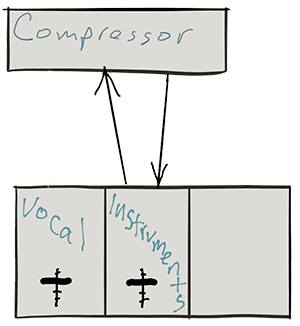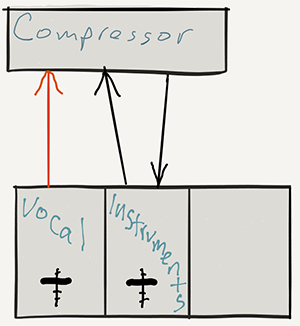We all know that the standard mic you get with you iOS devices isn’t really the best for capturing videos. And with the increasing number of vloggers (video bloggers) using smartphones to capture their content, a company from the United States came up with Lolly a pro mic that can be plugged into your device and there you go. Capture high definition audio with this digital 3D microphone that you can simply plug and play without using any other app. You can now do so much more with your iOS device, with Lolly you can record live shows, vlogs even podcasts.
Read more here: https://www.gizmotimes.com/accessories/lolly-3d-pro-mic-for-ios-devices/20834
Archives for April 2017
sE 2200a Review: The Best Affordable Condenser Microphone
 When recording audio at home, a good quality large-diaphragm condenser (LDC) microphone is eventually something you’ll want. As I say a lot, if you’re just starting out, you can jump into professional level audio with pretty much ANY LDC mic. But as you get more experienced, and when your budget allows, you can really up your game with a good LDC.
When recording audio at home, a good quality large-diaphragm condenser (LDC) microphone is eventually something you’ll want. As I say a lot, if you’re just starting out, you can jump into professional level audio with pretty much ANY LDC mic. But as you get more experienced, and when your budget allows, you can really up your game with a good LDC.
My personal favorite has been the Rode NT2-A for several years. But here is one that you should look into, since it has appeared on lists for “the best affordable condenser microphone” by several users.
It’s the SE Electronics sE2200a II C Large Diaphragm Cardioid Condenser Microphone
The sE 2200a is said to produce the quality audio of a higher end product without being cripplingly expensive. It is a favorite of many in the recording field. Each microphone is crafted by hand and comes bundled with a shock mount and pop filter (NOT common these days!) to help ease the recording process and to further enhance the quality of your recordings.
CLICK HERE to find out more or order your very own!
The REAPER Blog Q&A # 22 – Normalizing is bad; favorite plugins; mics for podcasting and more
Audio engineering and mastering is as important to the vlogging and podcasting community, as it is to the recording industry. And the types of equipment and software used affects the overall end product in a big way.
Reaper plugins in particular are described and reviewed on the Reaper blog by many of their clients. Overall, the opinions seems to be that the Reaper plugins and engineering software is vastly superior and produced a higher quality, more precise sound than it’s third party competitors.
But I do have an issue with one of the items advertised in the headline above, the one that says “normalizing is bad.” OK, if it’s bad, why is there a big fat button (OK, it isn’t really that big or fat :-)) in the Item Properties menu called “Normalize?”
This is one of those situations where a tool used in the wrong way or for the wrong thing can be construed as “bad.” But to say a tool is bad is just silly. That’s like saying “hammering is bad.” Yeah, if you try comb your hair with a hammer, I can see how that would be bad :-P. How about changing a lightbulb by “hammering” it. Yeah…bad. But if you need to push a nail into a piece of wood, good luck NOT hammering. Sheesh.
Normalizing is a tool. It can be overused and it can be used incorrectly – just like a hammer. But when used to hammer in the metaphorical nail, it’s the right tool for the job.
OK, I may have taken my metaphors a bit too far. Just keep this in mind when you read the article below.
Read more: The REAPER Blog Q&A # 22 – Normalizing is bad; favorite plugins; mics for podcasting and more
Logic’s Drum Machine Designer
Drum Machine Designer is the electronic counterpart to the acoustically inspired Drum Kit Designer, both of which are designed to work with Logic Pro X’s Drummer track system.
Drum Kit Designer gives you the complete access to the acoustic kit on a piece-by-piece basis, whether that meant changing the EQ on the kick drum, for example, or swapping different snare drums.
Read more about this here: http://www.musictech.net/2017/03/logics-drum-machine-designer/
What Is A Side Chain In Audio Recording?
 You may have heard of the term, “side chain” or “sidechain” in audio recording. As with so many things in the audio recording realm, the term sounds more complex than what it actually means.
You may have heard of the term, “side chain” or “sidechain” in audio recording. As with so many things in the audio recording realm, the term sounds more complex than what it actually means.
So what DOES “sidechain” mean already?
Okay, let’s start with a basic description of how an effect (think compression or EQ) is applied to an audio track.
Let’s say you want a compressor (see my post “Should You Use Compression In Audio Recording?“) on your musical instrument track. You would connect the compressor by sending the music on a round trip from the music track to the compressor. When the music comes back FROM the compressor, it is now compressed. See pic below.

How a compressor knows what to do
A compressor only applies its effect when it is told to by the incoming audio. For a review on this see my post Vocal Compression Using Reaper’s ReaComp Effect Plugin. For example, it will compress only if and when the incoming audio gets louder than a certain “threshold” volume. At all other times, the compressor does nothing.
Now usually the sending and receiving signals are from the same track – instruments from the instrument track go into the compressor and compressed instruments go back to the instrument track.
But what if you fed the compressor a DIFFERENT input?
Say you could get the compressor to compress the vocal track based on instructions from a track that is NOT the vocal? whoa, that’s some mad scientist stuff right there! But maybe you could do some cool things.
Let’s say you have music on a second track. What if you sent THAT audio into the compressor to control how the voice is compressed? Well. that is exactly what happens when you “duck” an audio signal. When the voice is singing/talking, it pushes the music out of the way. You guessed it. I have a post on ducking too:) – What is Ducking In Audio Recording?
You still have the instrument track sending the music on a round-trip to the compressor. But the compressor no longer takes orders from the instruments. It listens to a new master whose input comes in a side door:). Hence the moniker “side chain.”
That side door is where you send the signal from the vocal track. So the instruments still get compressed (turned down when the control signal gets loud enough), but it’s now the vocal volume acting as the control. So when the vocal goes above the threshold, the compressor turns the volume down on the instruments. Pretty cool huh?

Other cool things you can do with side-chaining
- Make a tempo-based tremolo by sending the side chain of a gate effect a click track so the gate on an instrument track opens and closes in time with the click track
- Make pumping dance tracks by putting a compressor on to the bass and sidechain the kick, so the kick will push through the bass every hit
- Put a compressor on the bass track and then have the kick drum activate the compressor via a sidechain. When the kick drum hits it will dip the bass line in the mix, allowing the kick to cut through the mix and sound more clear
- Anything your imagination can come up with
Hopefully this gives you an idea what sidechain (side-chain, or however you spell it) in audio recording means.